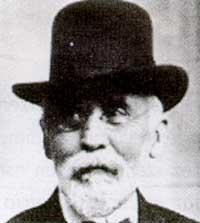Lorentz, Hendrik Antoon
(1853-1928)
Dutch physicist born in Arnhem in 1853. From a young age he welcomed research and science. He earned a doctorate in physics at the University of Leiden and returned to it to teach theoretical physics in 1878.

In 1875 he read his doctoral thesis. In it Maxwell completed and improved the theories on radial electromagnets made 10 years earlier, enunciating the electronic theory of matter. He said that the atoms that make up matter have electrical charge and described the individual behavior of electrons to justify their theory. The truth is that Faraday and Webern advanced that there were similar procedures, but Lorentz was the first to present the theory.
Based on this new theory, Lorentz was able to analyze a lot of phenomena. One of them is the one we know since 1896 of the Zeeman effect. Zeeman was Lorentz's assistant and postulated that that year in the violent magnetic field the spectral lines are divided into several components. With this medium discovery, in 1902 the Nobel Prize in Physics was awarded to two Dutch researchers.
From 1890 he explained the negative results of Michelson's experiment. As a result of these studies, the lengths, masses and times between two systems of straight and uniform motion were related. Since then this theory is known by the law of transformation that bears its name. For many scientists of the time, Lorentz was wrong and did not consider his hypothesis. However, Einstein did not think so. Lorentz studied in detail the proposed formulas and used them to round out the theory of relativity. For many, without Lorentz's contribution, one could hardly understand what Einstein had said at that time.
Lorentz found her in Haarlem in 1928.
Buletina
Bidali zure helbide elektronikoa eta jaso asteroko buletina zure sarrera-ontzian











